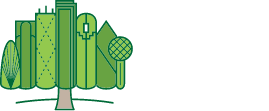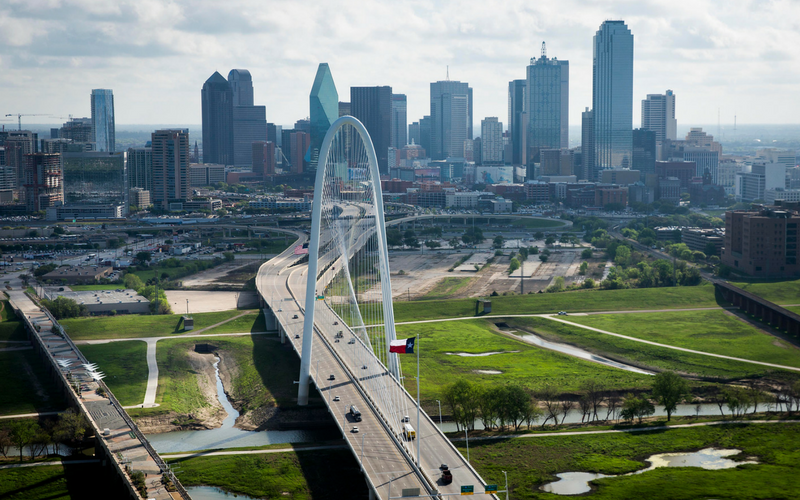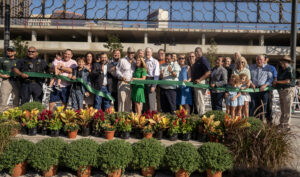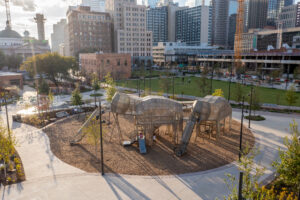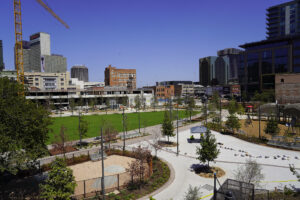Frederick Law Olmsted, the architect of Central Park, once summed up the goal of park design as satisfying people’s needs for “long spaces that you could dream away in.” This founding father of American parks may have been driven by philosophical passions, but he was also attentive to a whole array of positive, practical impacts that originate in parks.
For example, Olmsted took careful notes about of the property values of what was to become Central Park-adjacent real estate. From 1856 to 1873, those values increased by a whopping $209 million. To put that number in context, Olmsted and his partners created Central Park with an initial investment of $13 million.
As documented by the American Planning Association, parks increase property values, and they do so while attracting and retaining workers, homebuyers and retirees. And Olmsted’s pioneering data resonates with today’s findings. After Atlanta built Centennial Olympic Park, park-adjacent condominiums saw prices more than double, from $115 per square foot to a new normal of $250. Chattanooga, TN’s efforts to address a crumbling quality of life in the 1980s took the form of clean air programs, partially through the creation of parks and trails. The city acquired open space, made their urban outdoors more accessible to its residents and then watched park-surrounding property values rise by 127.5 percent.
Property values are just one factor in the equation. Parks more than pay for themselves because they exert such a fundamental influence on the regional economy. For instance, Boulder, CO’s addition of a neighborhood greenbelt now generates an extra $500,000 every year in municipal property tax revenue. And, while no one is going to forget the Alamo, San Antonio’s Riverwalk Park has become the city’s most popular attraction. As such, the Riverwalk is a major driver of the city’s multi-billion dollar tourism industry. It is as indispensable to San Antonio’s civic and cultural identity as the shops, restaurants, galleries and hotels that have sprung up around it.
However, these numbers are only one way to quantify park benefits such as soothing views, recreational amenities, free or inexpensive entertainment and reductions in noise. Toronto credits its parks with social cohesion, environmental benefits and reductions in health care costs. Considering the measurable impact parks have on stress reduction, mental health and physical fitness, it’s reasonable to hear park access prescribed as a kind of “preventative medicine.”
Dallas has an admirable history of investing in parks and recreation. Dallas spends $76 per resident on operating and capital expenses for all park agencies. With 381 separate green spaces, the city is able to provide nearly three parks and 1.7 playgrounds for every ten thousand residents. As a result, fully 58% of Dallas residents live within half a mile of a park. In fact, parkland makes up 12.6 percent, or 27,133 acres, of the entire city. For perspective, that percentage places Dallas on par with Seattle — but well behind Washington, D.C.
Overall, Dallas has a solid foundation on which to build when it comes to parks. But the city also has good reason to invest even more in its parks, both in terms of general upkeep and future development. In the Trust for Public Land’s annual survey, Dallas currently ties with Atlanta for a middle-of-the-pack park score: number 50 out of the nation’s 100 most populous cities.
You can help Dallas rise in these rankings by supporting Downtown Dallas Parks Conservancy. This non-profit organization is committed to transforming 14 gray acres in the city’s urban core, making them greener, smarter, more sustainable and more livable. Accomplishing this lofty goal, however, will require passage of a Capital Bond initiative, which will be the subject of a citywide election Nov. 7. To learn more about the bond package and what it means for you, your family and your neighbors, like Downtown Dallas Parks Conservancy on Facebook, follow them on Twitter or subscribe to their newsletter. Every individual Dallasite can make a difference and contribute to a prosperous — and green — future for our city.

